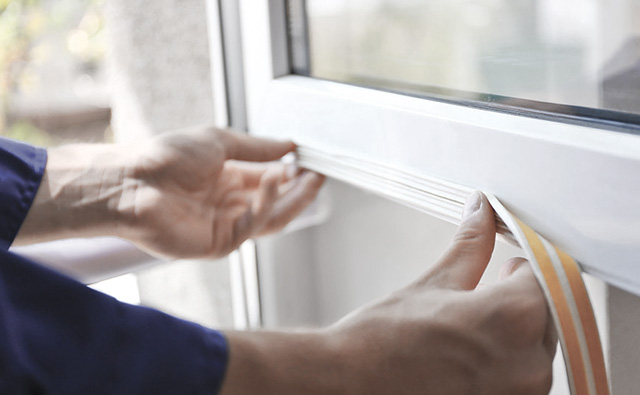Industry News, Adhesives & Sealants & Tackifiers
Understanding How Tape Works

Industry News, Adhesives & Sealants & Tackifiers

Image: adhesivesmag.com
Have you ever wondered how tape works? When a pressure-sensitive adhesive (PSA) tape is bonded to a surface, many factors are involved; understanding these dynamics will help ensure that tapes are bonded correctly and perform as expected. The polymers used to make PSA tapes can behave as both liquids and solids, depending on the circumstances. It is the tapes’ liquid behavior that becomes important initially when sticking to surfaces.
It is important to consider the surface on which you plan to use the tape. The surface may be flat and smooth, or it may be contoured or rough. When applying tape to curved or non-flat surfaces, several factors can affect bonding. The curved surface will induce forces on the edges or bend points in the tape, which can result in a de-bonding peel force that causes the tape to pull away from the surface. In these cases, it becomes important to ensure that the tape selected has a strong enough adhesion to overcome these forces. This may require selecting a much different tape than would be used to bond to the same material on a flat surface.
In addition, contaminants or other materials on the surface can affect bonding. When a tape adheres to a surface, it forms a contact between the adhesive and the surface. If there are contaminants—such as dust, oil or rust—on the bonding surface, the adhesive will contact those materials and not the surface underneath. The more contaminants on the bonding service, the more the strength of the adhesive bond is reduced and the tape may fail in its application. Having a clean, dry surface is important to forming a good bond.
It is also important to remember that the viscoelastic properties of PSA tape are temperature dependent. A tape that bonds very well at room temperature may not perform as well if you try to form a bond at much lower temperatures. Considering the application temperature is an important part of the tape selection process.
Specifically for sealing or waterproofing, two tapes are used most often: butyl rubbers and acrylic tapes. Butyl tape is developed using a synthetic rubber adhesive. These tapes are designed to be air impermeable, waterproof and insulating. Butyl tapes are ideal for seams, providing a water-tight bond for optimum sealing. These tapes can conform to irregular surfaces without degrading adhesion strength. Butyl tapes have a high initial tack and are more aggressive on contact. They can also bond to a variety of surfaces.
Acrylic tapes are made from either water or solvent-based adhesives and are created by polymerizing monomers to create polymers with specific properties. Acrylic tape usage is prevalent in the construction field, where waterproofing or sealing is essential. Acrylic tape provides a reliable seal and has a high level of cohesion. These tapes are known for their durability, and they work well when seaming vapor barriers and in sealing house wraps. Acrylic polymers offer excellent weatherability and can be used in harsh outdoor and indoor environments for years without degradation, unlike many rubber chemistries. Tapes used for moisture barriers are made from a range of materials and thicknesses to fit virtually any performance criteria.
PSA tape users should consider whether the project calls for a true barrier. Ultimately, barriers are most effective if installed with all laps, seams, penetrations and terminations completely sealed. Following the tape manufacturer’s instructions will ensure a project is safe for years to come.
86 592 5105533
A1112-1113 ONEPARK, XIAMEN 361010, CHINA
Privacy Policy |
Sitemap
2002-2026 © Foreverest Resources Ltd.
Registered ICP No.05013365